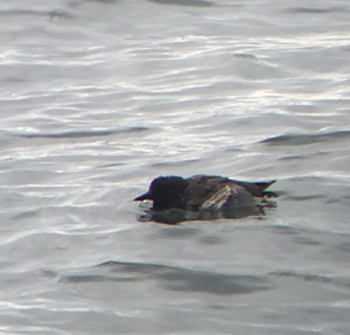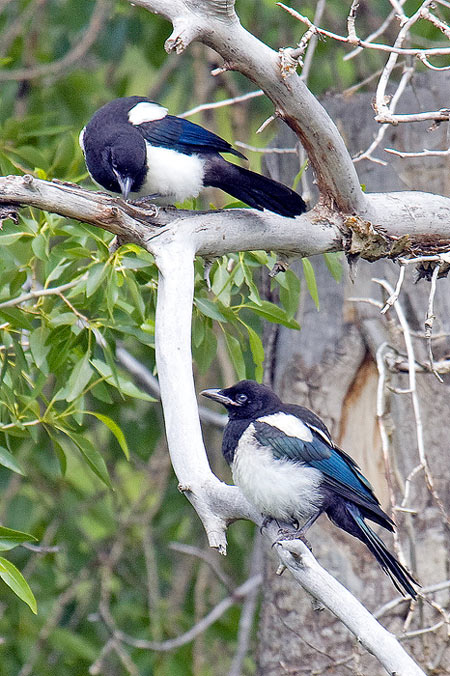Utah County Birders Newsletter
|
 |
Contents
September Meeting
Upcoming Field Trips
Captainís Log
Bird of the Month
Field Trip Report
- Tabiona
Field Trip Report
- Nebo Bench
Backyard Bird of the Month
August Hotline Highlights
SEPTEMBER MEETING:
Thursday, September 15th, 2016
(Note Date: This month's meeting is on the 3rd Thursday,
not our usual 2nd Thursday)
Celebrating the 100th birthday of the MBTA
- 7:00 pm.
Thursday, Sept 15, 2016 Celebrating the 100th birthday of the MBTA. What is MBTA
and why should birders care? Keeli Marvel will give a fun and informative
presentation in partnership with the US Fish and Wildlife Service on the history
and importance of the Migratory Bird Treaty Act.
Meet at 7:00 pm at the Monte L. Bean Museum. 645 East 1430 North, Provo, UT
http://mlbean.byu.edu/
Saturday, September 10th, 2016: 8am- noon. Utah Lake State Park. We'll look for continuing migrants around the State Park and the surrounding area. Meet at the pull off just past the bridge but before the State Park entrance on the north side of Center St. Bring a Utah State Park pass and a spotting scope if you have one.
Saturday, September 17th, 2016: 10am-3pm. The Utah County Birders are partnering with Hawkwatch for a day of hawk watching at Squaw Peak. Bring a chair to sit on and a scope if you have one. All birder experience levels are welcomed! https://hawkwatch.org/participate/calendar/migration-sites/350-hawkwatching-at-squaw-peak
We are actively recruiting people to lead local half-day field
trips, any time, any place. If you would like to lead a field trip or if you
have any ideas for this yearís field trips, please contact Keeli at -
keeli.marvel@gmail.com
Utah County Birders
Captainís Log: September 2016
by Keeli Marvel
 |
|
photos by Keeli Marvel |
 |
Migration is in full swing! Iím in the process of a
temporary migration from my summer vacationing grounds back to real life again
so this article will be another short one. I just got back from a week spent
immersed in bird biology and conservation at the North American Ornithological
Conference in Washington D.C., where I was honored to be surrounded by 2000+ of
the best and brightest (and possibly, nerdiest) minds working towards bird
conservation. The reports are less than comforting on the future of many bird
species, but I was comforted by seeing the passion and dedication of the
researchers and conservation biologists who are working toward a better future
for birds and for our planet. Itís something else to be completely surrounded by
that many like-minded people who are all in some form or another working towards
a common goal. Itís inspiring, to say the least.
As significant a change as I could possibly get from muggy and hot D.C., this
last week Iíve been vacationing on the coast of Puget Sound in the Pacific North
West. Notable bird sightings this week have been few as I have been wrapped up
in family activities, but at the house on the Sound where Iíve been staying Iíve
seen many squeaky-toy- impersonator-Chestnut-backed Chickadees, a family of
Annaís hummingbirds who have staked their very vocal claim on the feeders next
door, a grumpy Great Blue Heron who drops by occasionally to perch precariously
and improbably on the pine tree off the back deck, and a Belted Kingfisher who
patrols up and down this portion of the coast. On the ferry between Coupeville
and Port Townsend yesterday I picked up mixed flocks of Western and Heermanís
Gulls, and a raft of what I believe were mostly Rhinoceros Auklets (I couldnít
get the ferry driver to pause long enough for me to confirm Ė go figure).
Earlier this week in the sound I snapped an iphone bino pic of a bird Iím
tentatively calling an immature Pigeon Guillemot, although I welcome input on
the ID.
Thatís all the cool birds Iíve managed to see this last week. Iím pretty excited
to get home and see if I can catch up with that Buff-breasted Sandpiper reported
down at Utah Lake State Park! Hope yaíll are getting out, enjoying the cooler
weather, and seeing some migrating birds!
Happy Birding!
Keeli
 |
|
photo by Kendall Brown |
Black-billed Magpie
(Pica hudsonia)
Ė order: Passeriformes, family:
Corvidae
by Yvonne Carter
[Rerun article from August 2009]
You say, What?! That ubiquitous bird that we see everywhere we go in Utah? Yes,
we look at it that way but a couple of years ago, I had a reality check as a
group of birdwatchers from China were ecstatic as they viewed these black and
white birds, since they do not have this bird in China. (Maybe we could start a
new export business)
But be that as it may, their excitement over magpies gave me a different
perspective. So as you look at a map in your bird guide, you will notice that
the range for magpies is basically the west half of the United States (except at
the coast), ranging south to approximately Prescott, Arizona and into New Mexico
a little. They are also found through the western half of Canada. Yellow-billed
Magpies are found in the United States along coastal northern California.
Its length is about 19 inches, wingspan is 25 inches, and weight is
approximately 6 ounces; the male being larger than the female. Their wings and
tail have an iridescent shine, almost appearing greenish.
Historically, the magpie is associated with early North American Indians. This
bird would follow the bison hunts of the Indians and lived on the refuse of the
hunts. When Lewis and Clark encountered these birds in 1804 in South Dakota,
they noticed that the magpies were bold, even entering tents to take meat and
food from the hand.
There are 12 subspecies through northern Europe and Asia and with the Bering
Land Bridge as a connection, making the Black-billed Magpie similar to the
Yellow-billed Magpies. Cornell Labs state: "Eurasian Black-billed Magpies are
well known for their ceremonial gatherings in early spring. Interpreted as
territorial probings by dominant young birds, these gatherings have never been
observed in either of North American's magpie species, probably owing to
fundamental differences in the types of territories they hold."
The Black-billed Magpie nests in deciduous trees or on tall 20 to 30 foot shrubs
and you have probably seen plenty of their spherical nests which have a side
entrance and inside a cup of mud lining with soft material. It breeds in Utah in
lowland riparian and also pinyon-juniper habitats. They lay 2 to 9 eggs that are
blue-green with brown speckles. During the breeding season, it is an
insectivore, a ground gleaner, omnivore, and a ground scavenger, mainly eating
insects, berries, fruit, bird eggs, and nestlings. And during non-breeding
seasons , the magpie is not an insectivore, but is an omnivore as a ground
scavenger and forager, meaning carrion (roadkill) at roadsides.
If you would like to
write an article for the Bird of the Month, please contact
Machelle -
machelle13johnson@yahoo.com
Click here for past 'Birds of the Month'.
Field Trip Report
Pat Jividen's place in Tabiona - August
6th, 2016
by Deloy Pack
On August 6th 10 birders visited Pat Jividen and
the Hannah Hummingbird Haven to see the Hummingbirds coming to their feeders. We
were fortunate to see all four north Utah species, including a lovely male
Calliope that posed for good pictures at Pat"s place (a lifer for some of the
group).
Field Trip Report
Nebo Bench Trail - August 15th, 2016
by Suzi Holt
Here is our checklist for today's field trip plus on the way up the canyon we got wild turkeys, swallows and turkey vulture. Thanks to all who joined us our list of 22+ was not bad. But a no show on the American Three-toed Woodpecker today!!
Link to list with photos - http://ebird.org/ebird/view/checklist/S31110146
22 species (+1 other taxa) total
1 Sharp-shinned/Cooper's Hawk
2 Red-tailed Hawk
1 Broad-tailed Hummingbird
5 Hairy Woodpecker
7 Northern Flicker
1 American Kestrel
2 Olive-sided Flycatcher
2 Western Wood-Pewee
1Plumbeous Vireo
1 Steller's Jay
2 Common Raven
4 Mountain Chickadee
6 Red-breasted Nuthatch
1 House Wren
4 Ruby-crowned Kinglet
1 Yellow Warbler
2 Yellow-rumped Warbler
5 Dark-eyed Junco
4 Green-tailed Towhee
13 Western Tanager
4 Black-headed Grosbeak
4 Cassin's Finch
2 American Goldfinch
-------
After the mountain a few of us went to Utah Lake SP to look for shorebirds. A couple lifers for me and a few others (not bad) Baird's Sandpiper and Semipalmated Sandpiper! Thanks Milt Milton!!! Great day had by all!!
Link to list with photos - http://ebird.org/ebird/view/checklist/S31110423
28 species (+4 other taxa) total
5 Mallard (Domestic type)
3 American White Pelican
2 Great Blue Heron
1 Snowy Egret
120 White-faced Ibis
1 Osprey
4 American Avocet
1 Snowy Plover
100 Killdeer - Approximately
6 Baird's Sandpiper - I sent these to Bryant Olsen and he confirmed these for me
5 Least Sandpiper
2 Semipalmated Sandpiper - I sent these to Bryant Olsen and he confirmed them
for me
65 peep sp. - not sure on some of these :) this is a low number
1 Wilson's Snipe
2 Spotted Sandpiper
1 Solitary Sandpiper
2 Greater Yellowlegs
1 Franklin's Gull
30 gull sp.
27 Caspian Tern
1 Western Kingbird
1 Northern Rough-winged Swallow
1 Tree Swallow
1 Bank Swallow
1 Barn Swallow
1 Cliff Swallow
200 swallow sp.
2 Marsh Wren
28 European Starling
1 Yellow Warbler
3 Red-winged Blackbird
10 Yellow-headed Blackbird
August 2016
Jack Binch - Sandy
On the 20th I had a Western Screech-Owl calling in the front yard. I did not see it. That leaves the four species of hummingbirds as my favorites.
Jeff Cooper -
Pleasant Grove
Calliope Hummingbird - At least two young male Calliopes visited my
feeders during the month of August. I think that makes four years in a row now
for Calliopes in my yard in August. They are one of the gems of fall migration
here in Utah County.
Eric Huish - Pleasant Grove
Cooper's Hawk - stopped by several times this month to take a bath in our pond.
Milt Moody - Provo
A Western Screech-Owl -- heard only -- and an Orange-crowned Warbler -- seen only.
Alton Thygerson - Provo
CooperĻs Hawk - Three in the neighborhood which may explain the scarcity
of birds in my
backyard other than hummingbirds.
Report your favorite backyard bird
each month to Eric Huish at 801-360-8777 or
erichuish@gmail.com
Printable Version of this UCB Newsletter